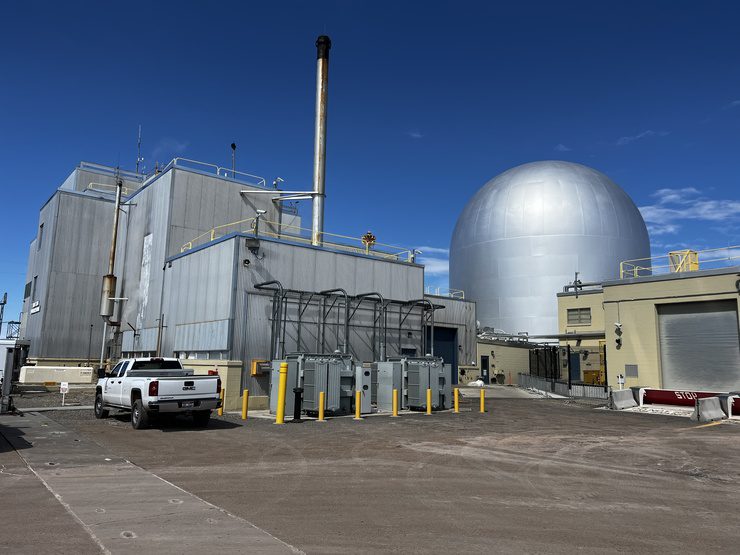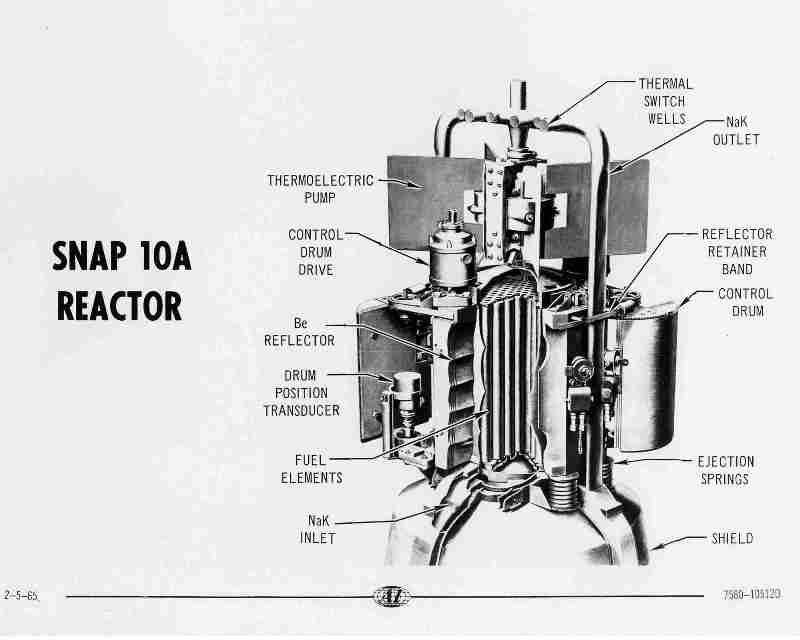What Are Microreactors and How Soon Could We See One in Operation
Microreactors are a class of very small modular reactors targeted for non-conventional nuclear markets. The U.S. Department of Energy (DOE) supports a variety of advanced reactor designs, including gas, liquid-metal, molten-salt, and heat-pipe-cooled concepts. In the U.S., microreactor developers are currently focused on designs that could be deployed as early as the mid-2020s.
The key features of microreactors that distinguish them from other reactor types mainly revolve around their size. Microreactors typically produce less than 20 MW of thermal output. The size obviously allows a much smaller footprint than traditional nuclear power reactors. It also allows for factory fabrication and easier transportability.
Among other unique aspects are their self-regulating capability, which could enable remote and semi-autonomous microreactor operation. Their rapid deployability (weeks or months rather than many years) is a huge benefit, too, allowing units to be used in emergency response and other time-sensitive situations. Furthermore, some designs are expected to operate for up to 10 years or more without refueling or significant maintenance, which could be a big benefit in remote locations.
Idaho National Laboratory: A Breeding Ground for Microreactors
A lot of microreactor development work is being done at the Idaho National Laboratory (INL). John H. Jackson, National Technical Director for the DOE’s Office of Nuclear Energy Microreactor program at INL, was a recent guest on The POWER Podcast. On the show, he noted some of the programs and facilities INL has available to assist in proving microreactor concepts.
“I like to say it starts with my program, because I’m overtly focused on enabling and accelerating commercial development and deployment of microreactor technology,” Jackson said. “But there are certainly the entities like the National Reactor Innovation Center, or NRIC, which is heavily focused on deployment and enabling deployment of microreactor technology, as well as small modular reactor technology.”
Jackson mentioned that the Demonstration Of Microreactor Experiments facility, or DOME facility, is “steadily growing on the map.” He said the iconic structure (Figure 1), which can be seen in the distance off to the north of U.S. Highway 20 by travelers passing by, once housed the Experimental Breeder Reactor-II (EBR-II), but it has now been repurposed for the demonstration of microreactor experiments.

“The Demonstration of Microreactor Experiments facility is intended to be a sort of all-in-one facility, where commercial developers can bring a small demonstration unit—a scaled demonstration unit—to connect to the facility, operate their reactor through operational regimes, and reject process heat,” Jackson explained. He believed there were already three companies that had initiated a front-end engineering design (FEED) process to prepare for demonstration of their microreactor concepts in the DOME facility, and he anticipated those demonstrations would begin sometime in 2026 or early 2027.
“We also have the LOTUS [Laboratory for Operations and Testing in the United States] cell under the NRIC program. That’s formerly the Zero Power Physics Reactor at the Idaho National Laboratory,” said Jackson. “It’s a facility that can handle high-enriched uranium and is going to house the Molten Chloride Reactor Experiment, or MCRE.”
The Microreactor AGile non-Nuclear Experimental Testbed (MAGNET) is a sub-support facility located at INL. Jackson said it is effectively “an electrically heated microreactor,” which allows full-scale component testing for microreactors. MAGNET has been outfitted with a 30-kW Brayton cycle power conversion unit so developers can demonstrate the full transfer of heat from the electrically heated core through heat exchange media to the Brayton cycle power conversion unit.
“[There is] a lot of exciting equipment, capability, and infrastructure at the Idaho National Laboratory dedicated to enabling commercial development and deployment of microreactor technology,” said Jackson.
Pele or MARVEL: Which Will Be First
POWER has reported extensively on the Pele and MARVEL microreactor projects. Project Pele is a Department of Defense (DOD) project that recently broke ground at INL. Meanwhile, MARVEL, which stands for Microreactor Applications Research Validation and EvaLuation, is funded through the DOE by the Office of Nuclear Energy’s Microreactor program.
Project Pele aims to build and demonstrate a high-temperature gas-cooled mobile microreactor manufactured by Lynchburg, Virginia–headquartered BWXT Advanced Technologies. Fueled with TRI-structural ISOtropic particle fuel, Project Pele will produce 1 MWe to 5 MWe for INL’s Critical Infrastructure Test Range Complex (CITRC) electrical test grid. The DOD noted last month that assembly of the final Pele reactor is scheduled to begin in February 2025, and the current plan is to transport the fully assembled reactor to INL in 2026.
The MARVEL design is a sodium-potassium-cooled microreactor that will be built inside the Transient Reactor Test (TREAT) facility at INL. It will generate 85 kW of thermal energy and about 20 kW of electrical output. It is not intended to be a commercial design, but the experience of constructing and operating the unit could be crucial for future microreactor developers and microgrid designers, as future plans are to connect it to a microgrid.
“The MARVEL reactor is one of the top priorities, if not the top priority, at the Idaho National Laboratory, along with the project Pele,” Jackson said. “One or the other—Pele or MARVEL—will be the first reactor built at Idaho National Laboratory in over 50 years.”
The MARVEL reactor will have a similar core to the System for Nuclear Auxiliary Power (SNAP) 10 reactor (Figure 2). The SNAP system was developed in the late-1950s and 1960s, with an aim to provide compact, lightweight reliable atomic electric devices for use in space, among other things.

“MARVEL is cooled by natural convection—sodium-potassium primary coolant—utilizes a slight variant of TRIGA fuel, the variant being that it’s a longer element than the standard uranium-zirconium-hydride element that constitutes a TRIGA fuel element. It is sourced using high-assay, low-enriched uranium, or HALEU,” Jackson explained. “It is slated for criticality, if everything goes right, in late 2027—probably November or December of 2027.”
Still, Jackson was cautious when it came to predicting when the first microreactor might begin operation. “There’s a lot of excitement around microreactors,” he said. “I cringe sometimes when people get a little ahead of themselves and start making bold declarations, like, ‘We’re going to have a microreactor next year,’ for instance. I think it’s important to be excited, but it’s also important to stay realistic with respect to timeframes for deployment.”
To hear the full interview with Jackson, which contains much more about microreactors and the work INL is doing to enhance their development, listen to The POWER Podcast. Click on the SoundCloud player below to listen in your browser now or use the following links to reach the show page on your favorite podcast platform:
For more power podcasts, visit The POWER Podcast archives.
—Aaron Larson is POWER’s executive editor (@AaronL_Power, @POWERmagazine).